50 Amazing Facts About Everyday Items
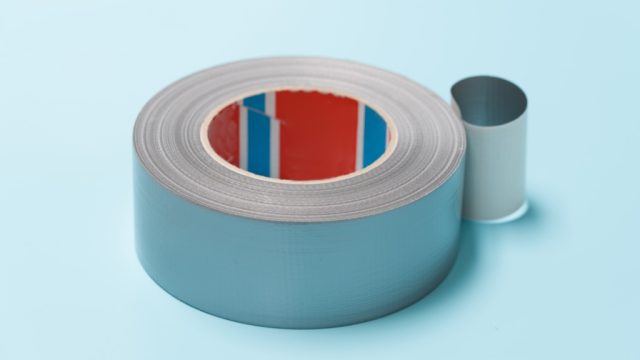
If you’ve ever doubted the cliché, “Everything has a story,” we’d like to direct your eyes to just about anything around you. That’s right: All of the simple, everyday items that you don’t think twice about but that populate your very existence.
The tools you use on a daily basis, the things you have lying around the house, and even the clothes you wear on the daily all have unexpected histories, quirky backstories, or strange facts about them that you likely had no idea about. Here, we pull back the curtain on all of them. You’ll never look at the world around you the same again!
1
High Heels Were Originally Men’s Shoes
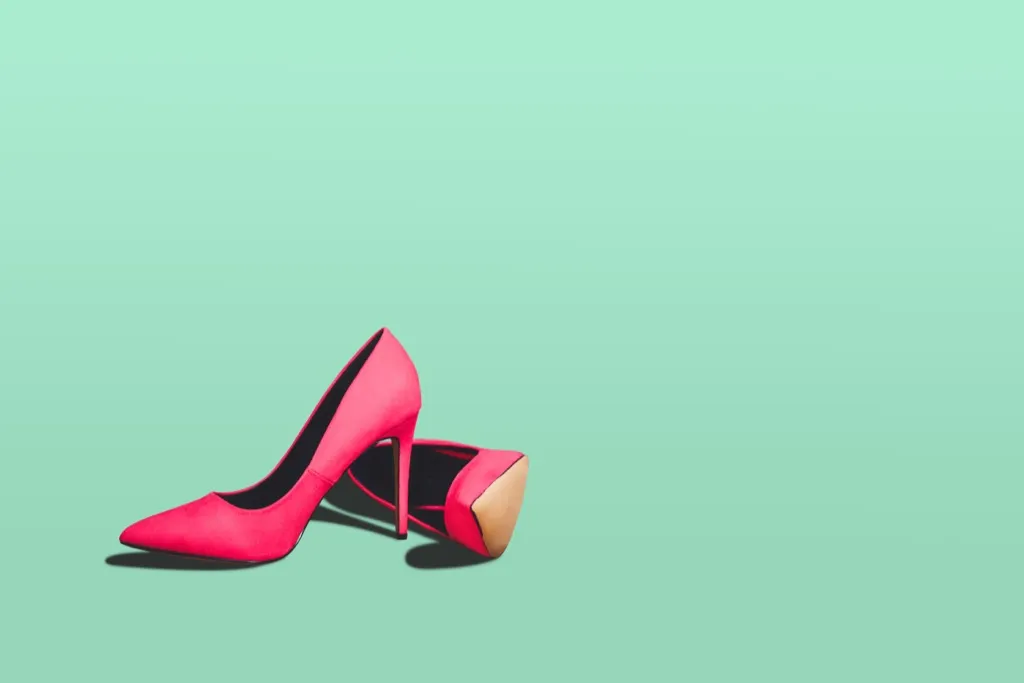
Sometime around the 10th century, some enterprising soul in a horse-riding culture figured out that your foot would stay more firmly in the stirrups if your shoe had a bit of a raised heel. The innovation spread quickly, and soon whole armies—of men—rode into battle wearing pumps.
By the 17th century, these shoes became a fashion trend in Europe; since having a horse was a symbol of high status, wearing a high-heeled shoe meant you had the medieval equivalent of a Mercedes-Benz. Both men and women of means wore heels until they ultimately fell out of fashion for men.
2
Playing Cards Have Historical Meaning
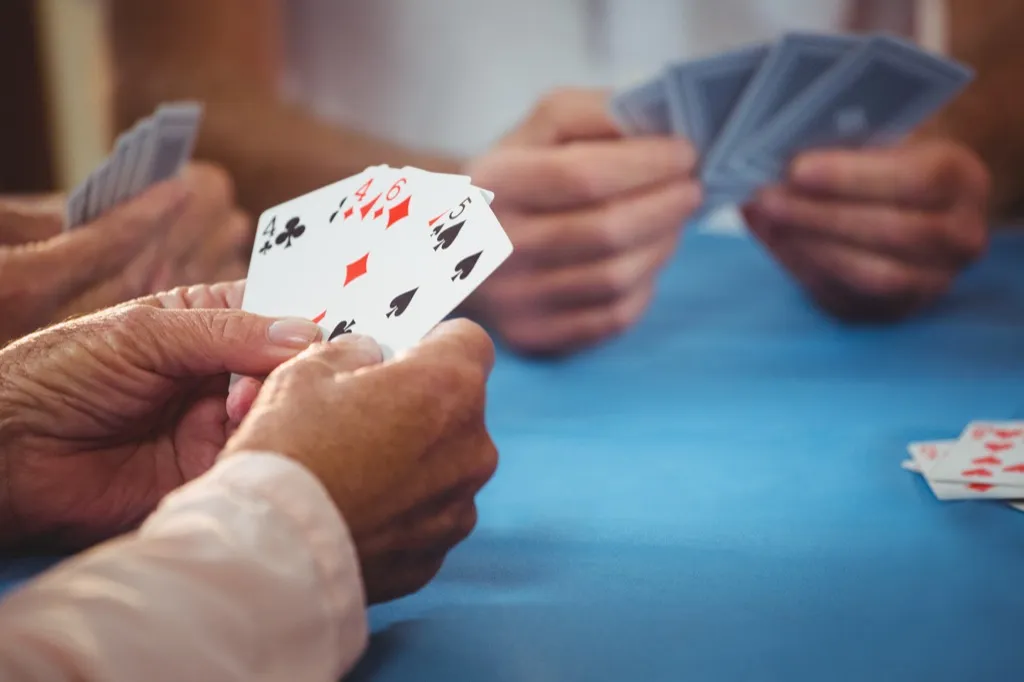
Legend has it that the four suites of a deck of playing cards come from the four pillars of the medieval economy: hearts for the Church, spades for the military, diamonds for the merchants, and clubs for the farmers. Each king is also said to represent a real historical ruler: the King of Hearts is Charles or Charlemagne, the king of Spades is the biblical King David, the King of Diamonds is Julius Caesar, and the King of Clubs is Alexander the Great. Whether that’s what the makers of the deck intended or whether it was a tale added over time, it is undoubtedly true that the King of Hearts is the only one without a mustache!
3
More People Have Cell Phones Than Toilets

According to a UN report from 2015, 2.5 billion of the world’s 7 billion people lack access to a toilet, particularly in areas of South Asia and Sub-Saharan Africa. Since another report put the number of mobile phone users at 6 billion, that means more than twice as many people have phones as proper plumbing. This is not to say there are too many cell phones but to say that we still have a long way to go when it comes to providing sanitation to everyone. And for more insight into this globe-spanning invention, check out 20 Amazing Facts You Never Knew About Your Smartphone.
4
Wearable Eyeglasses Have Been Around Since 1284
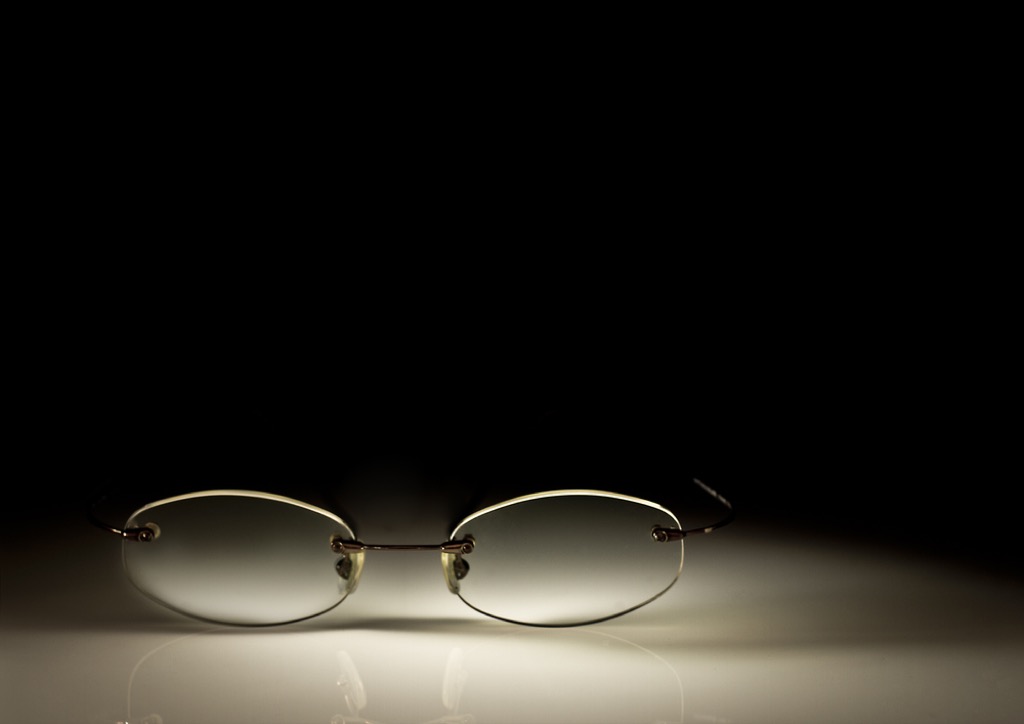
Imagine that every time you needed to read something, you had to lift a piece of glass the size of a mirror to your face. That was the best solution that humankind had come up with for vision problems before the 13th century, when some enterprising folks in Italy shrank the glass and heavy frames enough that they could finally be worn on the nose. A while later, Spanish eyeglass makers came up with the idea of attaching ribbons to the frame so that the glasses could remain on the wearer’s face. Finally, in the 1700s, these ribbons were replaced with the “arms” that today’s glasses have, allowing them to rest comfortably on the nose and ears.
5
The Blob of Toothpaste on a Toothbrush is Called a Nurdle

That artfully wavy bit of toothpaste that sits atop toothbrushes in advertisements has its own name (“nurdle”), and its own lawsuit, as well. In 2010, Colgate Palmolive sued its largest toothpaste manufacturing rival, GlaxoSmithKline, for claiming that it owned the exclusive rights to use a picture of the nurdle on its packaging. Glaxo, makers of Aquafresh, countersued, and the matter was settled confidentially out of court.
6
Houseplants Are Good for You
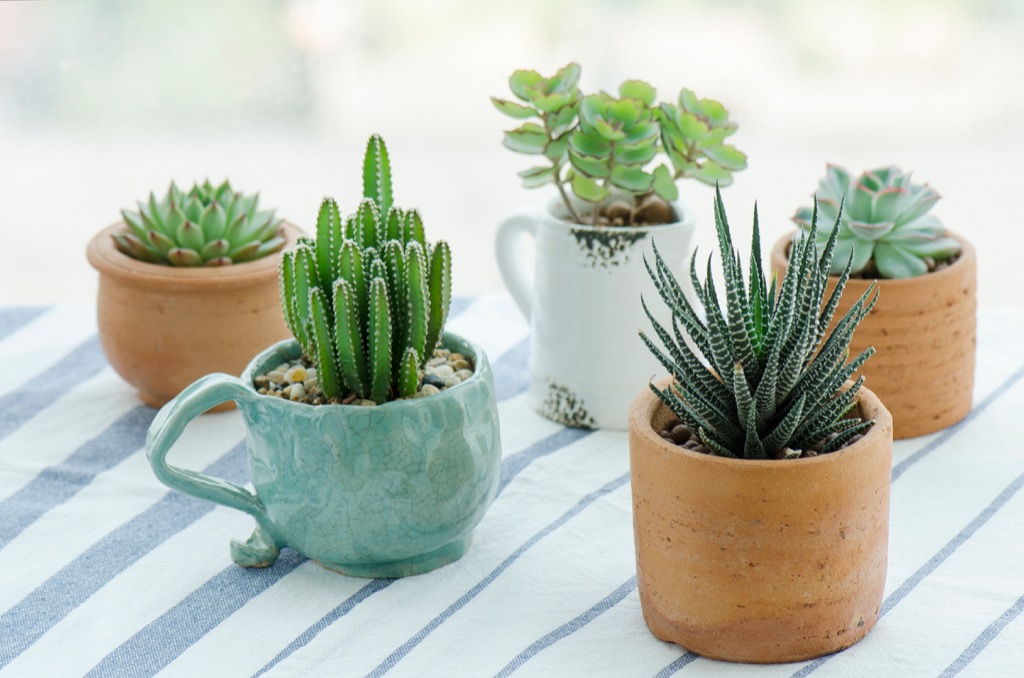
As it turns out, growing greenery inside your house is not only pleasant to look at; it’s also good for your physical and mental health. Studies have shown that indoor rooms with plants have up to 60 percent fewer airborne molds and bacteria.
English Ivy, peace lilies, Boston ferns, and Reed and dwarf date palms are especially good at cleaning the air and regulating humidity. More than that, a Swedish researcher found that houseplants tend to make people more contemplative and self-reflective, since they often remind people of loved ones (when given as gifts) and the beauty of nature. But, to make sure you’re only getting the right greenery, read up on the 30 Plants You Should Never Bring into Your Home.
7
Salt Was Used as Currency
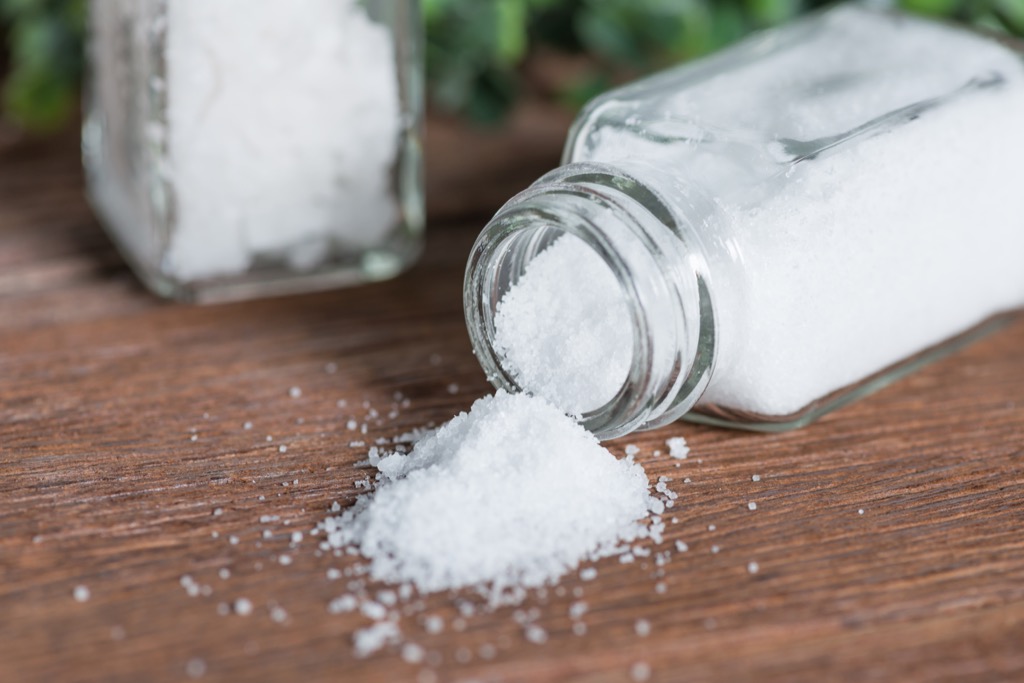
Salt has been vital to human history and exploration, since—among other things—it allows people to preserve food and take it with them on long journeys. Salt was so important that the ancient Romans used it as money, paying their soldiers in rations of salt. In fact, that’s where we get the English word “salary.” It’s also where we get the English word “salad,” which was named not for leafy greens but for those same Romans who liked to sprinkle their greens with salt to improve the flavor.
8
A Gallon of Gasoline Contains 31,000 Calories

Disclaimer: do not drink gasoline. Okay, now that we’ve got that covered, if you could drink gasoline, it would provide you with 31,000 calories of energy, the equivalent of 15 to 20 days’ worth of food. Scientists figured this out when they were trying to compare the efficiency of a car to that of a human peddling a bicycle. By calculating how many calories it takes to bike for one mile at 15 mph, they found out that a person could bike about 912 miles on a single gallon of gas.
9
Your Smartphone Could Send Astronauts to the Moon
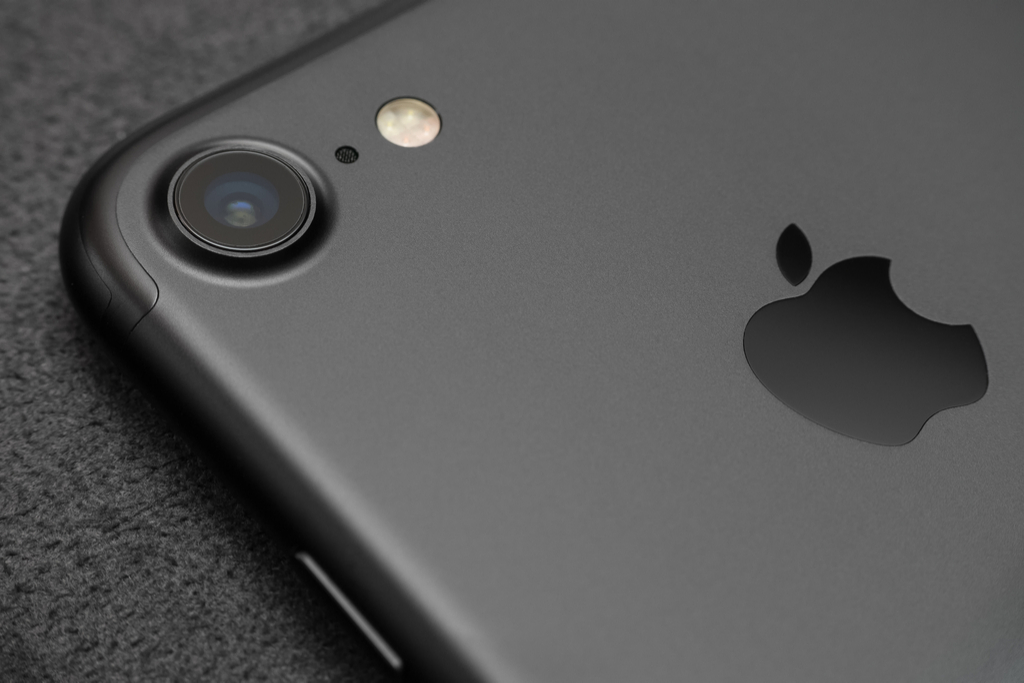
You probably know that the phone you carry around in your pocket is light-years ahead of the technology of five decades ago. However, it’s hard to grasp just how advanced it is. In terms of processing ability, your phone is millions of times more powerful than the Apollo Guidance Computer (AGC) that NASA used to send astronauts to the moon in 1969. AGCs cost $3.5 million each and were the size of a car, but even just the clock function of an iPhone 6 is comparable to sending 120,000,000 simultaneous Apollo-era spacecraft to the moon and back.
10
Rice is the Oldest Food that We Still Eat Today
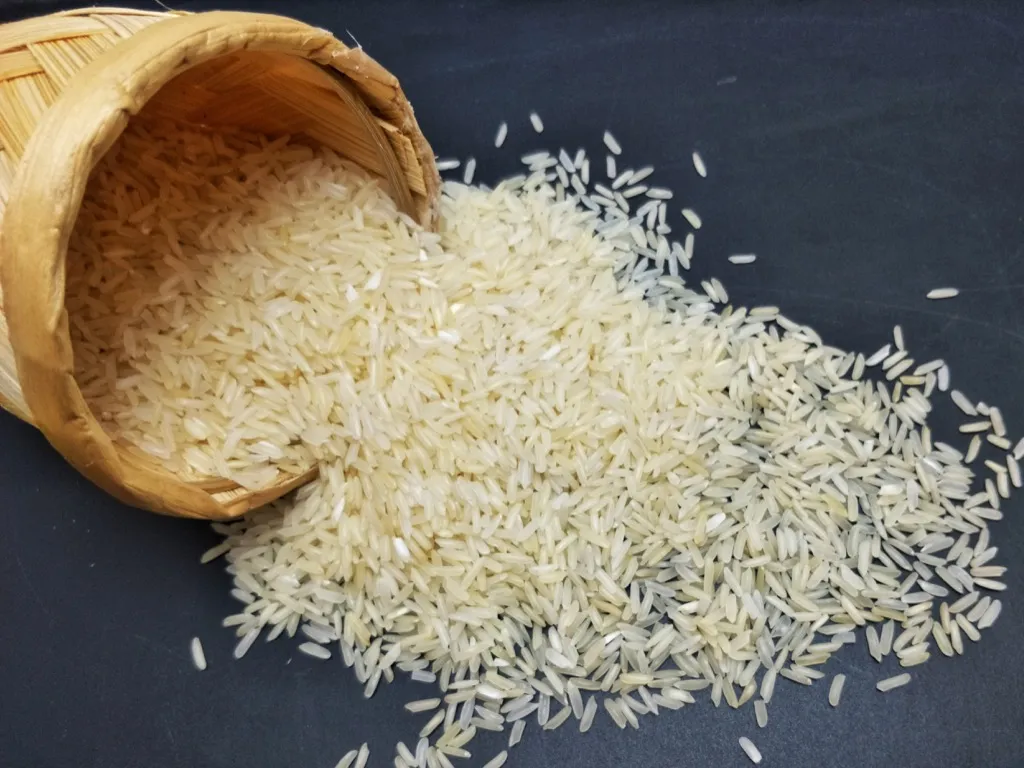
Humans have been cultivating rice plants—which are actually species of grass—for somewhere between 12,000 and 15,000 years. All of our modern, domesticated rice can be traced back to a single crop in the Pearl River Valley of ancient China. The only other food that might be as old is corn, which was domesticated in Mexico between 7,500 and 12,000 years ago.
11
Dog’s Aren’t Actually Colorblind

Though you may have heard the myth that dogs don’t see colors, the truth is that they do, but in a more limited spectrum than humans. They can see yellows, blues, and violets very well, but have a harder time distinguishing reds, oranges, and greens. However, decreased vision of color allows dogs to have more of the receptors that let them see well in low light and track movement. If you’re thinking of redecorating your dog house, stick to blue and purple.
12
Pen Caps Have Holes to Prevent Choking
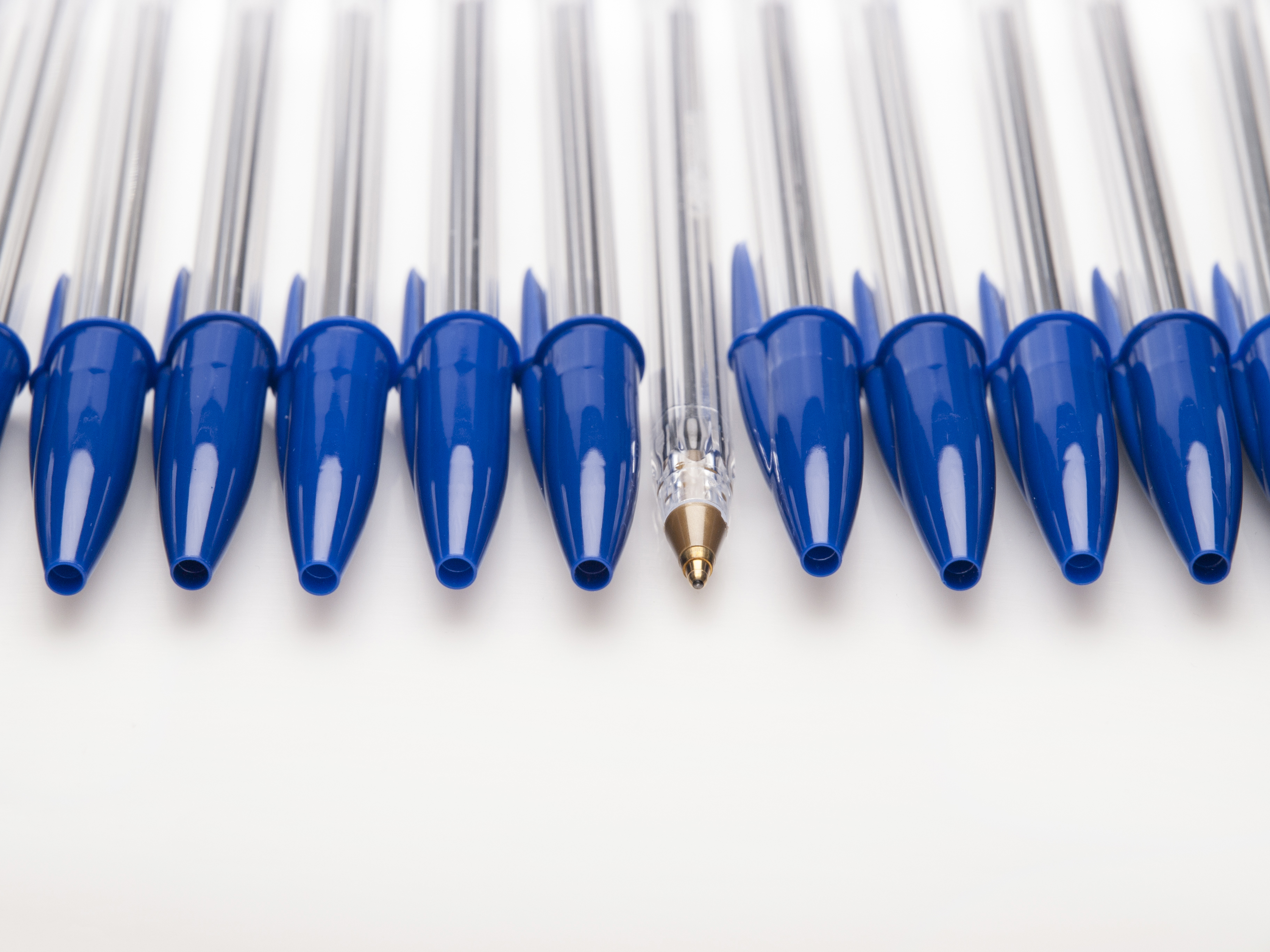
Next time you’re looking at a cheap, mass-produced ballpoint pen—the Bic Cristal, in particular, with its clear barrel and cap the color of the ink inside—take a closer look at the top of the cap. There’s a hole. While some conspiracy theorists thought Bic did this on purpose to dry out the ink so you’d have to buy more pens, the truth is much more thoughtful. In case a small child should happen to swallow the small, brightly-colored cap, the hole ensures that the cap doesn’t block off the airway completely, preventing choking.
13
The Mom of a “Monkees” Singer Invented White-Out
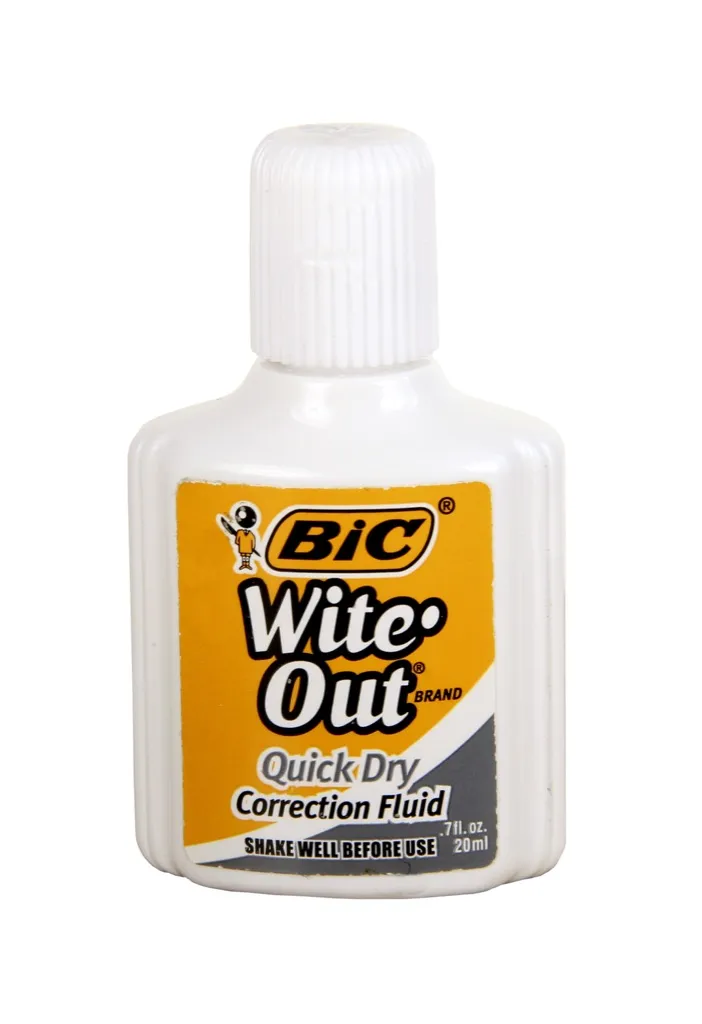
Mike Nesmith of The Monkees, a pop quartet on television in the late 1960s and one of the original “boy bands,” was the son of an unsung inventor. While Betty Nesmith was working as an executive secretary at a bank in 1951, she began using white tempera paint to cover up typing mistakes. After perfecting the formula and naming it “Liquid Paper,” she offered to sell her invention to IBM, but they passed, so she began marketing it herself. It wasn’t until the mid-’60s that she started making substantial money from it; then, when she sold the rights to the Gilette Corporation in 1979, she received a $47.5 million paycheck, plus royalties on future sales.
14
The First Webcam Was Created to Check a Coffee Pot

Nowadays, people use FaceTime and Skype to see and chat with friends all over the world. However, webcam technology originated with a slightly less ambitious goal. In 1993, researchers at the computer science department at the University of Cambridge just hated getting up from their chairs to check the coffee pot only to find that it was empty. They wired up a system that would stream images—three per minute—from the Trojan Room where the pot was kept to the internal computer network. By the end of the year, the stream made it onto the new World Wide Web and the Trojan Room coffee pot briefly attained international fame.
15
Berries Aren’t What You Think They Are

Botanists provide us with a very specific definition of a berry. It must have three layers: a protective outer layer, a fleshy middle, and an inner part which holds the seeds. It must also have two or more seeds and come from a flower with only one ovary. By this definition, blueberries and cranberries are berries, but strawberries, raspberries, blackberries, and cherries aren’t. Things that are berries? Bananas, kiwis, watermelons, peppers, tomatoes, and even eggplants. But don’t stress about it—the scientific classification came after the coining of words like “strawberry.” Plus, nobody wants eggplant on top of their pancakes!
16
It Takes a Lot of Bees to Make Honey

“Busy as a bee” is a saying for a reason—colonies of bees work tirelessly to convert nectar into honey to eat when the flowers aren’t blooming. However, each bee certainly can’t do it alone. An individual bee will only make about one-twelfth of a teaspoon of honey in its entire lifetime. Luckily, a single colony usually contains between 20,000 and 60,000 bees and honey is a very high-energy food. It contains natural preservatives, meaning that honey is one of the very few foods that, if stored properly, will never go bad.
17
Albert Einstein Co-Invented the Refrigerator
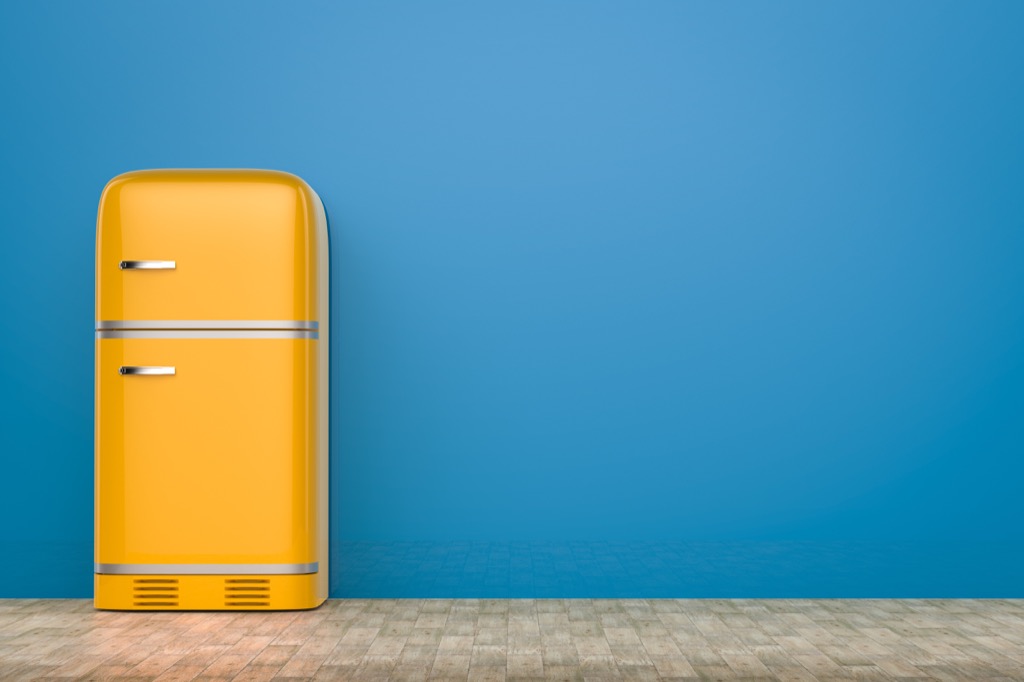
Although the very first refrigerators were manufactured by General Electric in 1911, the coolants they used to keep the insides frosty were very toxic. In fact, leaking refrigerator coolant killed a sleeping family in Berlin in the 1920s. None other than Albert Einstein read about this tragedy in the paper and set about devising a solution. Together with his former student Leo Szilard, he created a refrigerator design with no moving parts, so there were no seals with the potential to leak. Though their design was abandoned in the 1950s for newer technological developments, Stanford scientists are revisiting it today as a way to bring refrigeration to areas without electricity.
18
Trailers Used to Run After the Movie

Those short previews of coming attractions have been around since 1913, but they used to play after the feature film, hence the name “trailer.” However, it was obviously harder to make the audience hang around after the movie had ended, so they were shifted to the beginning, but the name stuck. Incidentally, that deep male voice you probably think of when you think of movie trailers belonged to Don LaFontaine, who voiced more than 5,000 movie trailers before his death in 2008.
19
Chocolate Was Used as a Medicine
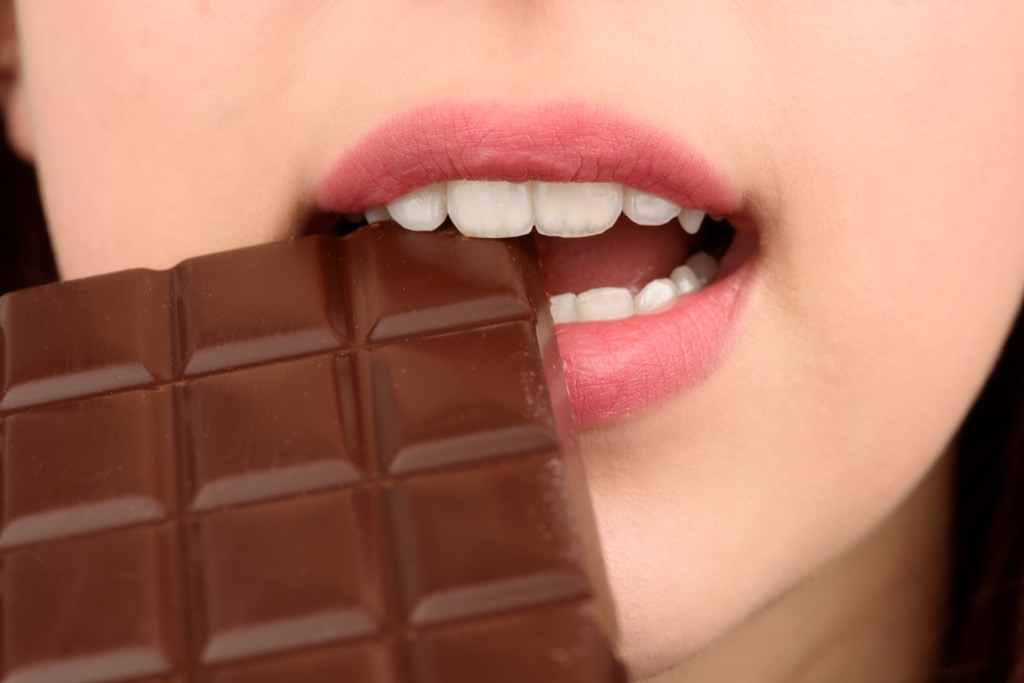
Native to Mesoamerica, chocolate—or the cacao bean from which it comes—wasn’t discovered by Europeans until the late 1500s. Explorer Francisco Hernandez observed the Aztecs using cacao as, among other things, a medicine. When chocolate came to Western Europe soon after, the Church was suspicious of its stimulating properties, but since it could be used for medical applications, it was deemed acceptable. European doctors prescribed it for everything from fevers to indigestion to melancholy. Though these cacao mixtures were quite different from the chocolate of today, chocolate might have been banned from Europe altogether had it not been used as a medicine.
20
You Can Chill a Beer in Two Minutes
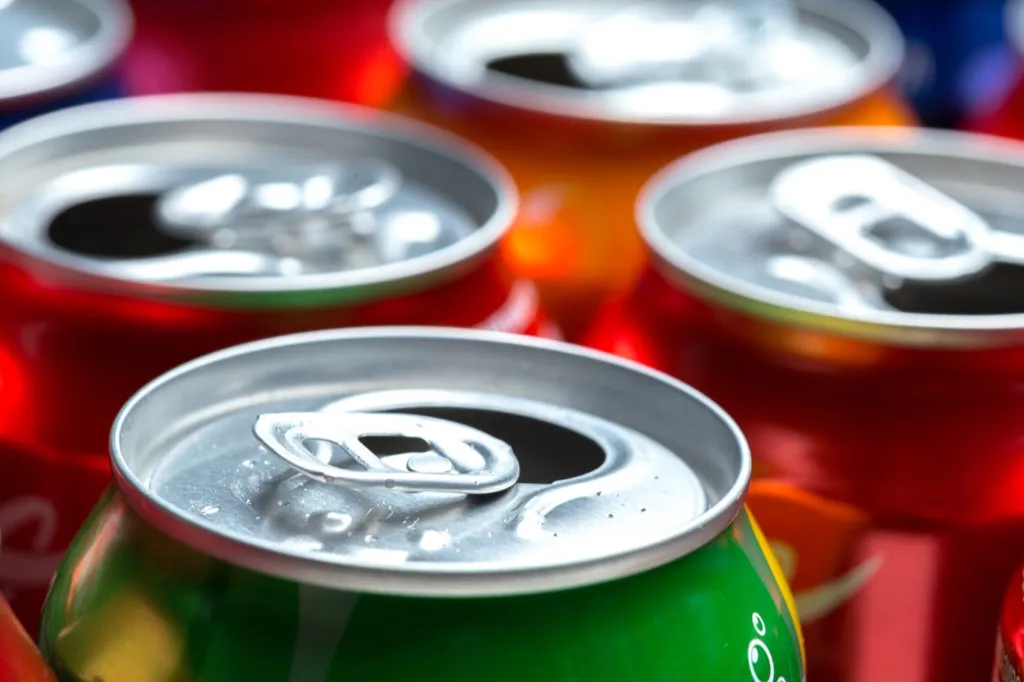
Actually, you can chill any canned drink from room temperature with just water, ice, and salt. Pour some water in a medium-sized bowl and add as much ice as you can—two full trays, if possible. Add two spoonfuls of salt and stir well. Nestle the canned beverage down into the mixture and let sit for two minutes, stirring gently about halfway through. Of course, you could always just pour the drink over ice, but this method prevents a watered-down beverage.
21
There’s a Reason for That Hole in a Spaghetti Spoon
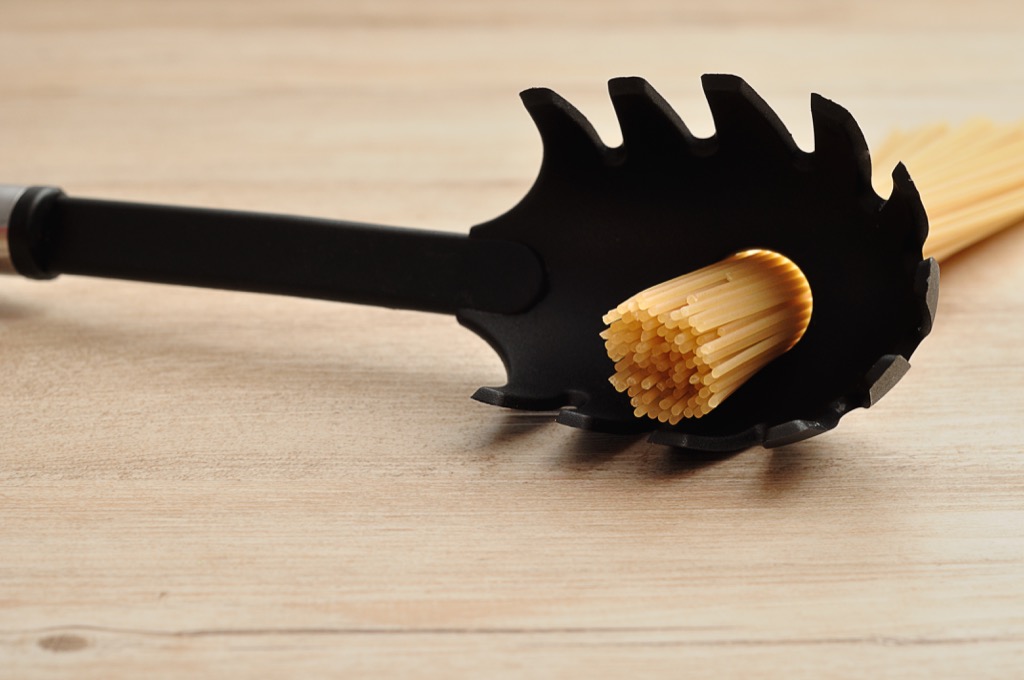
If you’ve got a spaghetti spoon—that’s the one with the large tines for separating strands of pasta—take a look at it. Does it have a single, circular hole in the middle? You might assume that’s to drain off water when you lift the cooked spaghetti from the pot, but it’s even more specific than that. The amount of dry spaghetti that fits through that hole is a single serving. No more guessing about how many noodles you need!
22
Roundabouts Are Safer than Regular Intersections

In the United States, roundabouts are rare enough that drivers often become confused or frustrated upon encountering them. However, they’re more common in Europe because they promote safety. A four-way intersection offers 56 potential points of conflict—that is, chances for you to hit a pedestrian or another car. A roundabout reduces that number to 16. They do require drivers to slow down, but since a traffic light requires stopping on red a large portion of the time, roundabouts actually allow for faster travel, as well.
23
Barbie’s Full Name is Barbara Millicent Roberts

Barbie’s been around since March 9, 1959, when she was unveiled at the New York Toy Fair. Her creator, Ruth Handler, based her image on a German doll that was a favorite plaything of her daughter, Barbara. Barbie’s very first look was a black-and-white striped swimsuit, with hair pulled into a fashionable ponytail, and since then, she’s served as an inspiration for numerous artists and fashion designers worldwide.
24
M&M’s Stands for Mars and Murrie
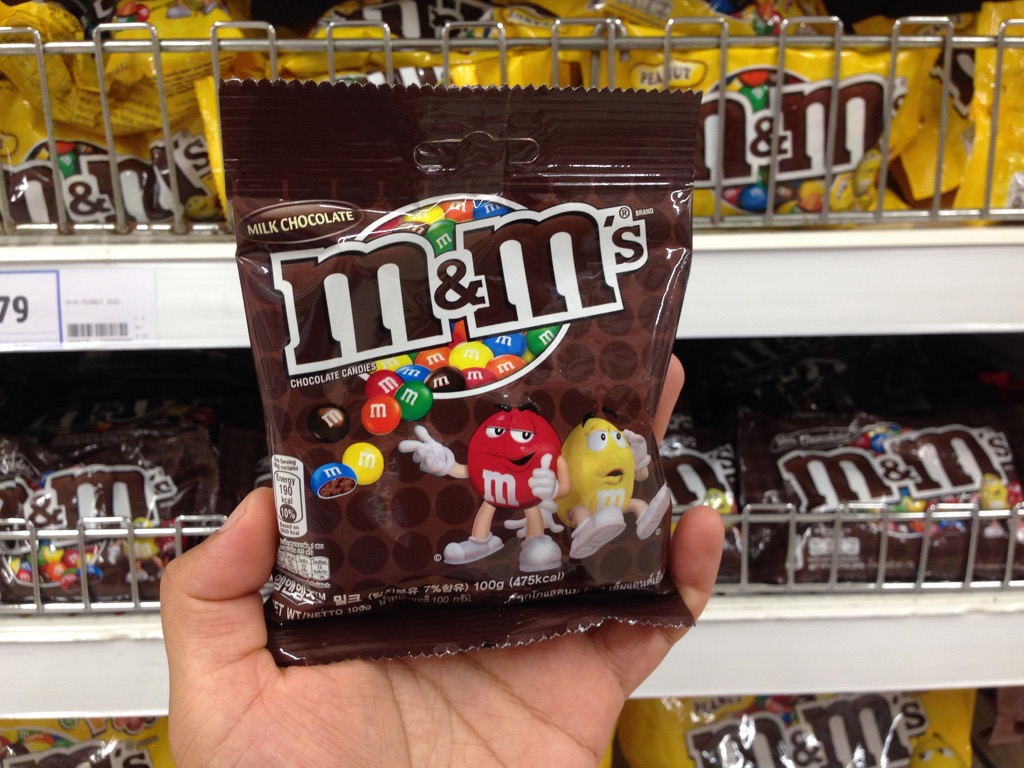
Forest Mars, son of the candy company’s founder, developed a method of manufacturing drops of chocolate inside a hard candy shell and set up shop in New Jersey in 1941. He then approached a friend about going into business together: Bruce Murrie… son of the founder of Hershey’s. For the first few years, M&M’s contained Hershey’s chocolate, but alas, the two men had a falling out in 1949 and Mars bought back his share of the company. The partnership may have only lasted eight years, but the two candy barons are immortalized together in this ever-popular snack’s name.
25
Bubble Wrap Was Supposed to Be Wallpaper

In 1957, two engineers came up with the idea to glue two shower curtains together, trapping tiny bubbles of air in between them. They were trying to come up with a type of textured wallpaper, but it didn’t take off. Then they marketed their creation as greenhouse insulation, but again, it went nowhere. Finally, in 1960, IBM needed to ship some delicate data processors, and a phenomenon was born. The beloved tradition of popping the individual bubbles might even have mental health benefits—a recent study showed that one minute of popping Bubble Wrap was as relaxing as a 30-minute massage.
26
Your Keyboard Was Designed to Slow You Down

Have you ever taken a close look at your computer’s keyboard and wondered why the letters seemed to be randomly strewn across the keys? In reality, it’s not random at all. This QWERTY design (named for the top left row of letters) was invented in 1872 for the typewriters of the time. Typists were getting faster than the machines they used, which would cause the typewriters to jam, so slowing them down actually saved time in the long run. There’s no need for the same result now, but everybody’s so used to QWERTY keyboards that they’ve even made the leap to smartphones.
27
Croissants Aren’t French
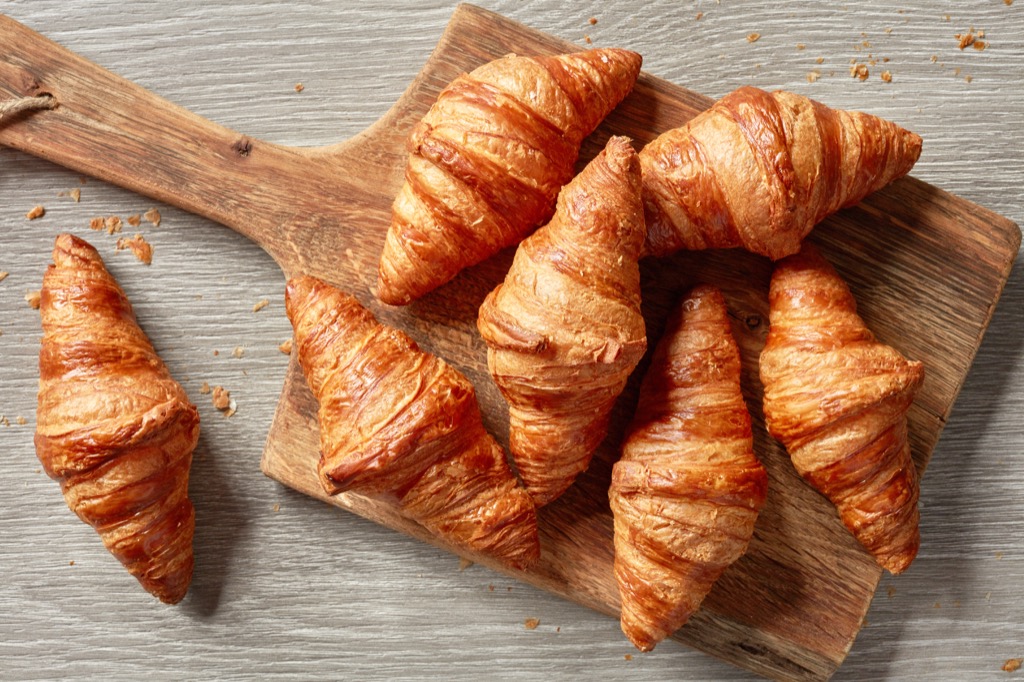
Though many think of them as the quintessentially French baked good, the croissant originated in Vienna, Austria, as early as the 13th century. Back then, it was a denser pastry known as a kipferl, but it was made in a distinctive crescent shape. There are many apocryphal tales of how the croissant made its way to France, but the first documented appearance of the modern croissant—now made with flaky, buttery puff pastry—didn’t occur until the early 1800s, when a Viennese baker began selling his crescent-shaped creations in Paris.
28
There Thousands of Ways to Tie a Necktie

A Swedish mathematician recently calculated the number of different ways to tie a tie at over 175,000. This is especially shocking considering that a previous study set the number firmly at 85—quite a difference. The newer study took into consideration many variants which the previous one did not, including exposed knots, wrappings, and windings. They even created a knot generator to show you a variation (and how to tie it) at random. Still, despite this sartorial discovery, if you take it from us, there’s really only one proper way to tie a tie.
29
A Dollar Bill Only Lasts 18 Months
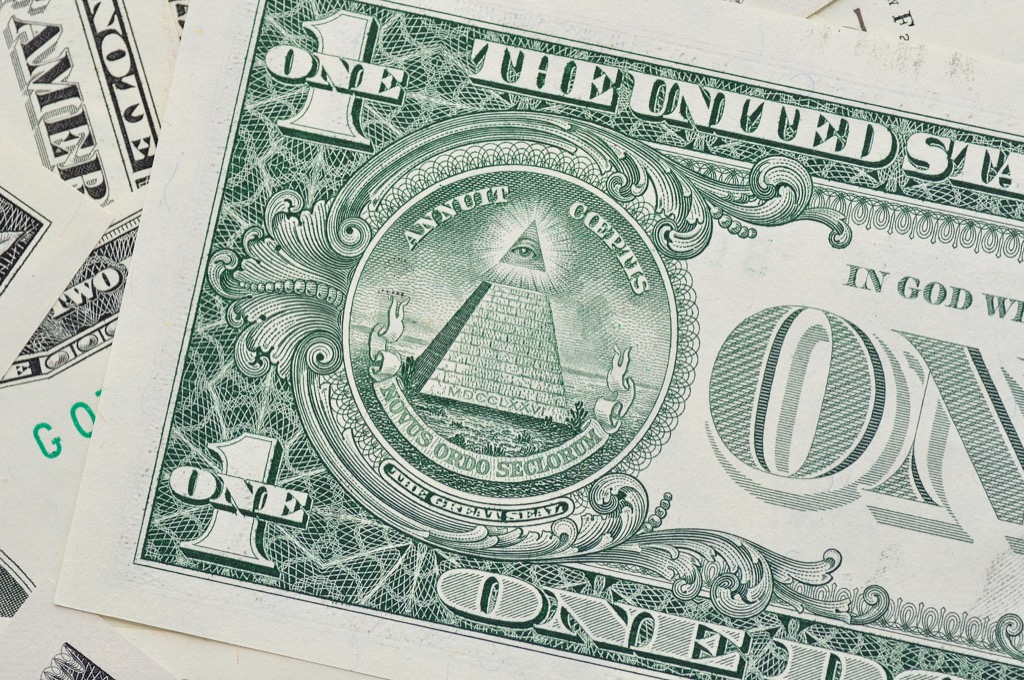
Many countries use coins for their equivalent of one dollar because paper money wears out so quickly. U.S. dollar bills—the most circulated denomination of bill—only last an average of a year-and-a-half before they need to be taken out of circulation and replaced. In fact, though the U.S. Mint prints about $696 million (or 37 million bills) a day, 95 percent of that simply goes out to replace bills that are faded, torn, dirty, or otherwise unsuitable to be circulated.
30
The Tip of Your Shoelace Has a Name
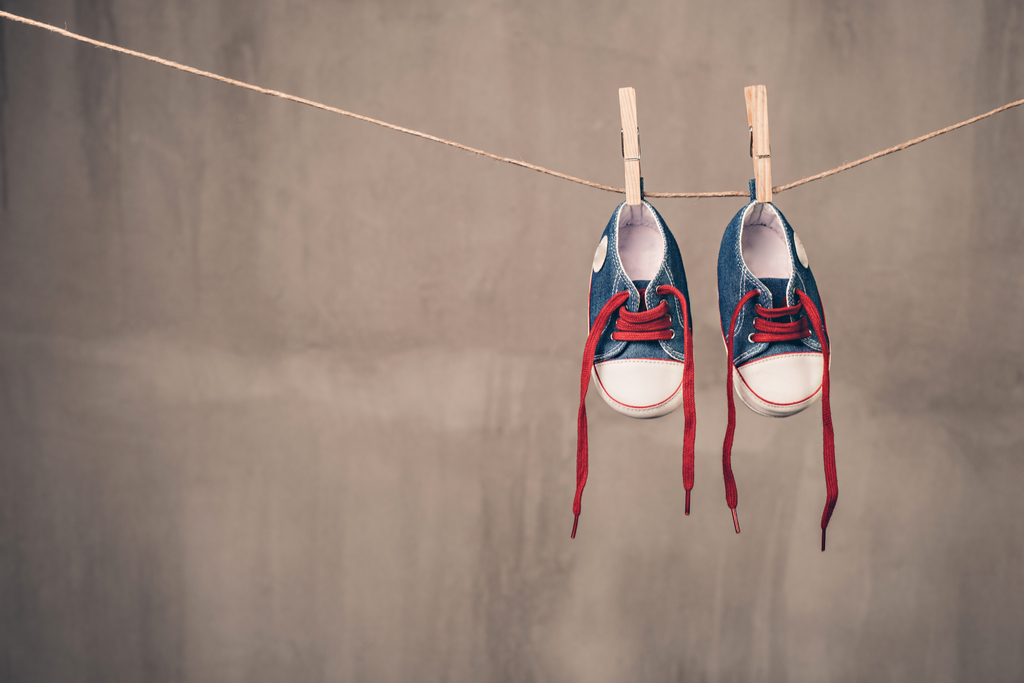
Those plastic or metal tips on both ends of your shoelaces are called aglets, and they’re more important than you’d think. Just try lacing a shoe without them. In fact, aglets have been around since ancient Rome, though they were usually made out of stone or glass at that time. The word “aglet” comes from the old French aiguillette, meaning needle. Who knew so much thought and history went into keeping your shoelaces from unraveling?
31
Coffee Makes the World Go ‘Round

Coffee might be incredibly important to your morning routine, but it’s even more important to the world economy. Produced by 25 million farmers in 50 countries all over the globe, coffee is second only to oil when it comes to the most traded commodities. Forty percent of the total produced every year comes from Brazil. Although New Yorkers drink the caffeinated brew at a rate seven times higher than the U.S. national average, Finland is the country with the highest per-capita coffee consumption.
32
The Computer Mouse Was Originally a Turtle

It’s not hard to imagine how the computer mouse got its name—it’s small and quick, and the cord that connects it to the computer resembles a tail. However, manufacturers of early versions referred to it as a turtle, with its hard shell on top and moving parts underneath. Although early computer experts weren’t sure they’d catch on, computer mice (or mouses—the Oxford English Dictionary accepts both plurals) are here to stay.
33
A Slinky Has Been to Space
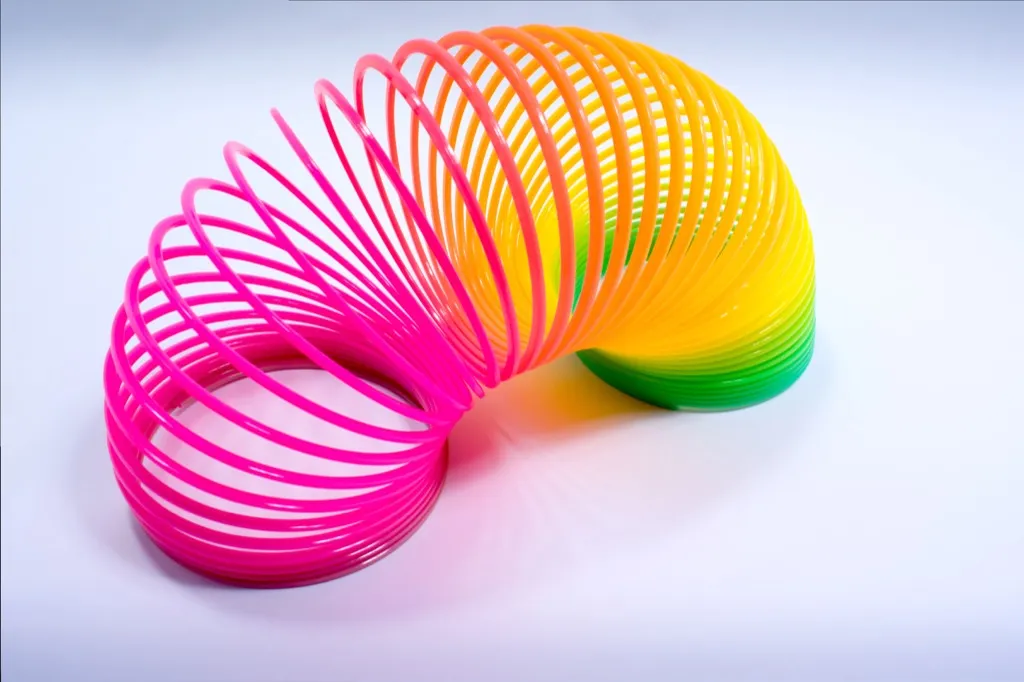
A popular toy ever since its invention in 1946, the humble Slinky has delighted girls and boys of all ages for more than 70 years. Made of flattened wire (originally) or plastic (for safety reasons), an uncoiled Slinky would be 87 feet long. It’s not only a toy; the metal version has been used by engineers and soldiers as a makeshift antenna. In 1985, a Slinky even made it into space aboard the Space Shuttle Discovery. However, astronaut Dr. Seddon reported that the Slinky refused to slink in zero gravity: “it sort of droops.”
34
White Eggs Are as Healthy as Brown Eggs

You might think that since brown eggs tend to cost more, they surely have more nutrients, less fat, or something having to do with health. After all, brown, whole-wheat bread is better for you than white bread. In fact, the color of the shell says nothing about the contents’ nutrition, quality, or flavor. Brown eggs cost more because the hens that lay them are larger and require more feed, thereby costing more to raise. The cost gets passed on to the consumer.
35
IKEA Product Names Follow a Pattern
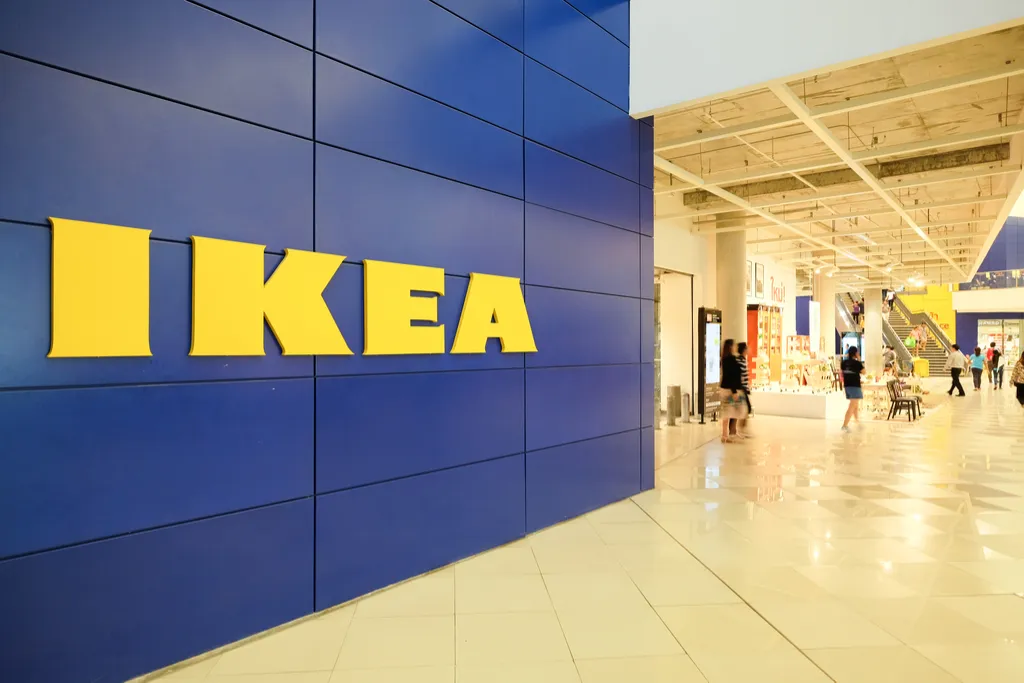
Statistically speaking, it’s likely that you own at least one piece of IKEA furniture, and if you bought and assembled it yourself, you’ll know that their products all have names, not numbers. IKEA’s founder is dyslexic and wanted people to easily identify various models of things, so beds are named after places in Norway, sofas are named after towns in Sweden, kitchen tables are places of interest in Finland, chairs are given male first names, and so on. That way, you’ll always remember your first Rönnskär.
36
McDonald’s Sells the Best Coca-Cola

Admittedly, this “fact” is a bit subjective, but it is true that there’s a tangible difference when it comes to Mickey D’s fountain version of the soda. Founder Ray Kroc sought out the Coca-Cola company in 1955 and has been partnering with them ever since. As a result, the proprietary Coca-Cola syrup that gets shipped in plastic bags to other retailers gets shipped in stainless steel containers to McDonald’s. Many people think this makes for a fresher, tastier Coke.
37
Snapple’s 1001 “Real Facts” are Fact-Checked…

…but they’re still sometimes wrong or absurdly ambiguous. In 2002, the manufacturers of Snapple began printing what they call “Real Facts” (quotation marks in the original) on the insides of their bottle caps. Though their president of marketing asserts that these factoids are “vigorously” checked and retired when no longer true (the average American definitely doesn’t walk 18,000 steps a day anymore, for instance), mistakes slip through. Incidentally, the word “factoid” itself doesn’t refer to a small fact, but rather an assumption that gets repeated so many times that people assume it’s true—just like Snapple’s “Real Facts.”
38
Electric Fans Don’t Cool the Air

You could set a thermometer down in front of an electric fan on turbo mode and the temperature wouldn’t drop. In fact, if you left the thermometer next to the working parts, the temperature might actually rise thanks to the electric current. However, though the fan doesn’t cool the air, it does cool you… or anything else with water in it. In addition to improving air circulation in a closed space, the fan speeds up evaporation, making liquids—such as the sweat on your skin—cooler.
39
Pencils Are Yellow Because of Chinese Royalty
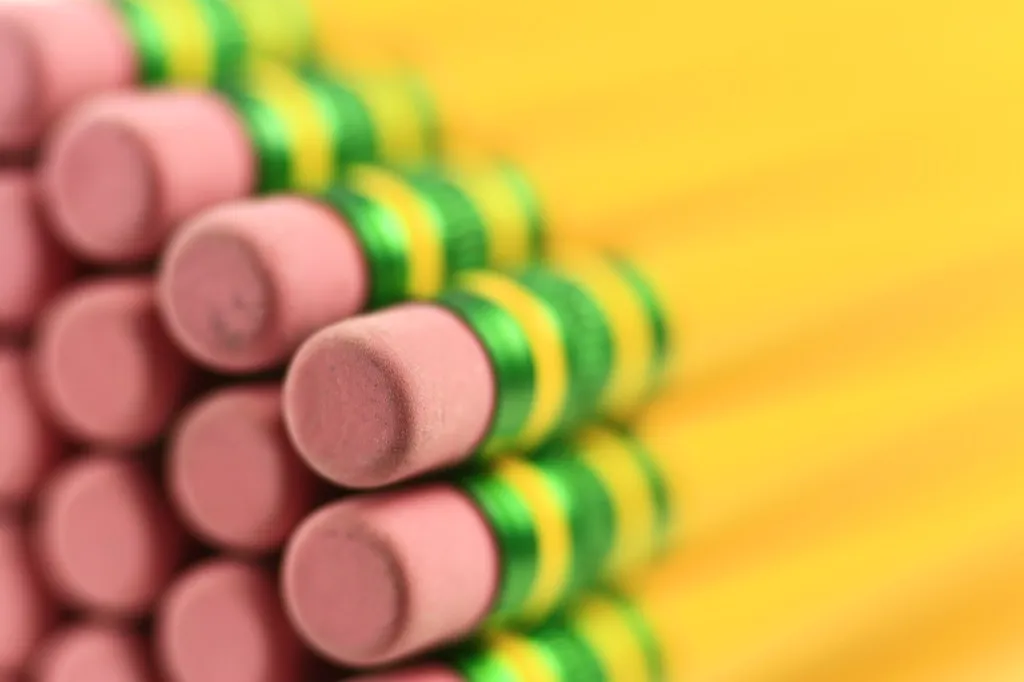
Pencils come in all sorts of colors, of course, but if you had to pick a “standard” pencil color, you’d probably think of a yellow-gold color. That’s no accident. When pencils started to go into mass production in the 1890s, the finest available graphite (not lead) to fill them came from China. Pencil manufacturers wanted everyone to know that they used only the best Chinese graphite, so they painted their pencils yellow, the traditional Chinese color of royalty.
40
The Remote Control Predates the Television

Though the first electric television came into being in 1927, the remote control is almost three decades older. Nikola Tesla invented a “teleautomaton” that could control certain mechanical devices at a distance with radio waves and debuted it in 1898 with a remote-controlled boat. Although the technology didn’t catch on at the time, the laziness brought about by the invention of television changed that. The first TV remote, marketed as the “Lazy Bones,” was linked to the TV set by a long wire, but so many people tripped over it that the wireless remote control, made in 1956, was an even bigger hit.
41
All Standard CDs are 74 Minutes Long
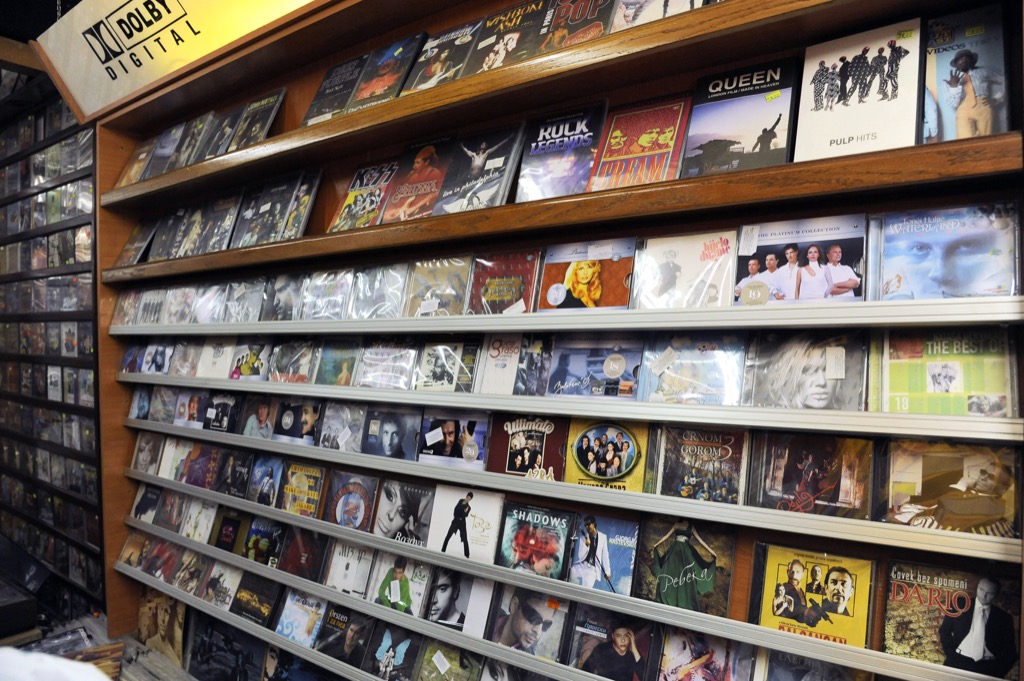
While they’ve been largely replaced by digital downloads for new music, you’ve surely still got a few CDs hanging around your house. Compact discs were the first widely-available digital recordings of music and were produced jointly by the Phillips and Sony corporations working together in the early 1980s. The first CDs were supposed to be 11.5 cm in diameter, but Sony insisted that they be 12 cm, large enough to hold 74 minutes of music. Supposedly, Sony’s vice president’s wife was a huge fan of Beethoven, so the demand was based on the fact that the legendary Ninth Symphony is exactly 74 minutes long.
42
Cotton Candy Was Invented by a Dentist

Made of liquid sugar spun into tiny strands, cotton candy was invented in 1895 by John C. Wharton, a candy maker, and William Morrison, a dentist. They called their creation “fairy floss” and sold thousands of servings at the St. Louis World’s Fair in 1904. It wasn’t renamed “cotton candy” until the 1920’s by Josef Lascaux… another dentist… who sold the saccharine confection to his patients. One wonders if these sugar-peddling dentists weren’t attempting to drum up more business for themselves.
43
There’s Less Gold Than You Think

We all know gold is valuable because it’s rare. It’s hard to get an exact value for how much gold we’ve mined in all of human history, but some estimates put it at 10 billion ounces—or a cube about a third of the size of the Washington Monument. And we only mine the equivalent of a 14-foot cube—about the size of a single room—of new gold each year. Ironically, we’ve only mined about 1 percent of the gold in the Earth… because the rest is in the planet’s molten core.
44
Play-Doh Was Originally a Wallpaper Cleaner
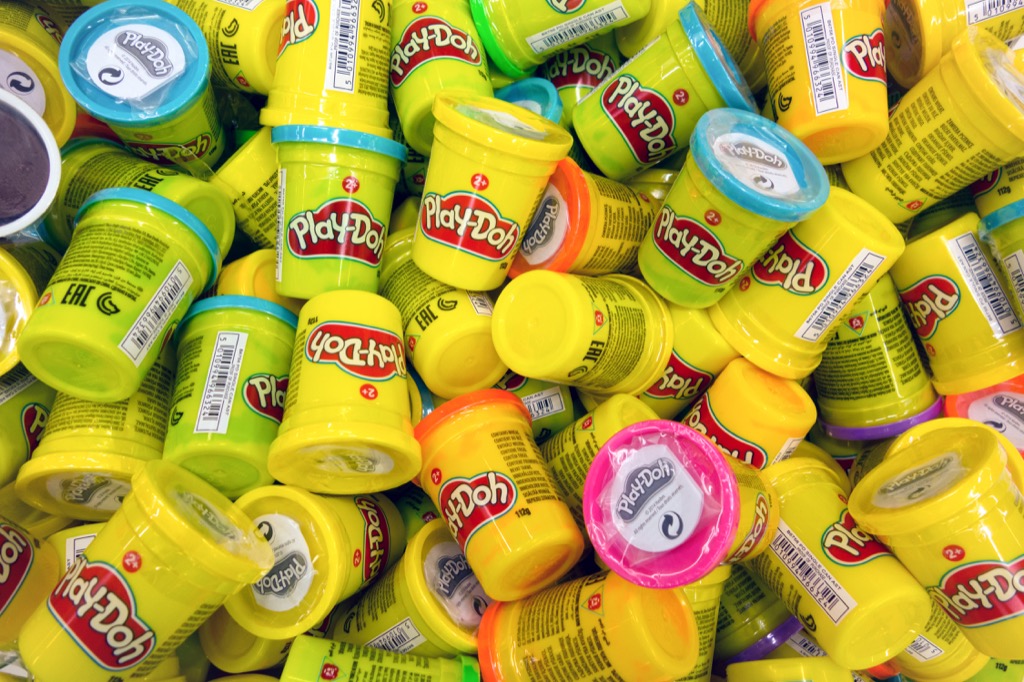
In the grand tradition of toys that were invented by mistake, the clay-like substance we now know as Play-Doh was first sold for the purpose of lifting soot off of wallpaper. At the time, it only came in an off-white color, but when it was sold as a toy, it was produced in red, blue, and yellow. Today, it’s available in over 50 colors, and the current owner Hasbro has trademarked that signature Play-Doh scent you always had on your fingers as a child.
45
Amazon Box Sizes Aren’t Random

Most of us have probably had the experience of ordering something small from Amazon—a single book, CD, or even pen—and had it arrive in a box that seems way too big. So wasteful. However, it’s been reported that this is a result of Amazon’s complex shipping algorithm that takes into account the size of the shipping vehicle and the size of other packages going to the same place. The small item is assigned a box size that will fit with the other packages and keep everything from sliding around, thus saving on fuel costs and ultimately being more environmentally friendly.
46
Rain Boot Throwing is an International Sport

While referring to rain boots as “Wellies” is less common in the U.S., the British honor the 19th century Duke of Wellington, Arthur Wellesley, for the waterproof footwear he commissioned and brought into fashion. Nowadays, Wellies are popular worldwide—for wearing, of course, but also for sport. Some parts of the world have a traditional “Wellie wanging” competition where contestants line up to see how far they can throw one of these rain boots. The record is 44.97 meters, or a whopping 147.5 feet.
47
Mapmakers Prevent Plagiarism with Fake Cities

As useful as Google Maps can be, paper maps still have their place in the world, and mapmakers have a long tradition of putting copyright traps in their work to keep others from stealing it. This often takes the form of “paper towns” or phantom settlements—places that appear on maps but don’t actually exist. However, there’s at least one case of a paper town becoming real. Agloe, New York, was just such a phantom settlement, but when a general store was built in the corresponding location, the owner read the map and named it Agloe General Store, assuming that was the area’s name.
48
Microwaves Were Discovered by Accident

More accurately, the discovery that microwaves could cook food was an accident. In the 1940s, engineer Percy Spencer was building a magnetron for some radar equipment when he noticed that the chocolate bar in his pocket had started to melt. Inspired to conduct further tests, he directed microwaves at popcorn (which popped) and eggs (which exploded). Incidentally, scientists don’t agree on how, exactly, microwaves heat food, but they do agree that they use much less energy than conventional ovens.
49
We Can Print Food

Who among us hasn’t been hungry but too lazy to get off the couch when a tempting restaurant commercial comes on the TV? Why can’t you download and print your dinner the same way you could a picture? Well, we’re not quite there yet, but in the past few years, some enterprising folks have used 3D printer technology and specialized ingredient “ink” to print entire meals. Sugar sculptures and elaborate chocolate creations are possible, but so are pizza, pasta, quiche, and brownies.
50
You Shouldn’t Use Duct Tape on Your Ducts
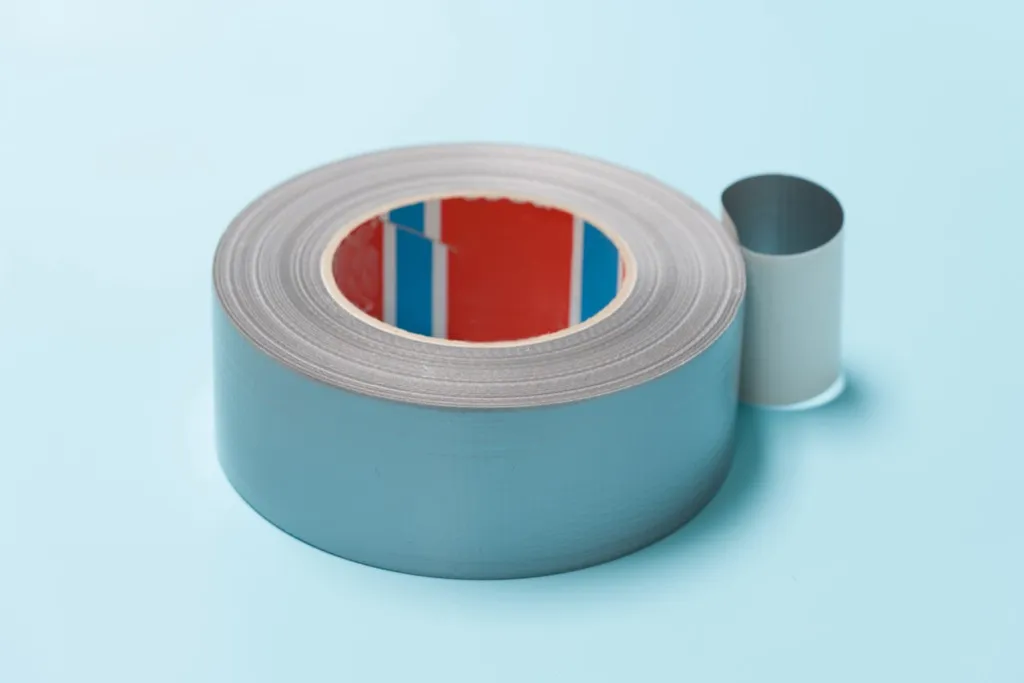
Duct tape is a marvelous product, used as the solution to many household problems. However, the one problem you shouldn’t use it for is a leaky duct. A university laboratory tested many different kinds of tape and sealant on different duct materials, and only the duct tape failed repeatedly and catastrophically. In many places, having duct tape on your ducts is actually a building code violation. Keep your duct tape wallet, shoes, purses, picture frames, and hammocks, but get some foil tape or aerosol sealant for your ducts.